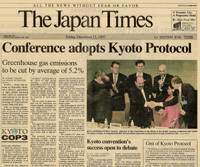Power Plant CCS

Carbon dioxide is the most common greenhouse gas after water vapor. Burning fossil fuels, land clearing and other activities of modern industrial society have caused the concentration of carbon dioxide in the atmosphere to climb from about 280 parts per million to 380 parts per million, causing warming and other climate changes.
From 1991 to 2000, CO2 accounted for 82% of total U.S. GHG emissions in terms of its global warming potential. About 96% of these carbon emissions resulted from the combustion of fossil fuels for energy
Energy efficiency improvements and switching from fossil fuels toward less carbon intensive energy sources were once seen as the only realistic means of reducing carbon dioxide (CO2) emissions. In recent years, however, analysts and policymakers have begun to recognize the potential for a third option—the development of “end-of-pipe” technologies that would allow for the continued utilization of fossil fuel energy sources while significantly reducing carbon emissions. These technologies have collectively come to be known as carbon capture and storage (CCS) technologies.
Large point sources of CO2 would allow economies of scale in carbon separation and simplify transportation to a storage site. Electricity generation and some large fossil fuel burning industrial sources are therefore good candidates for carbon capture. Coal-fired power plants have a flue gas stream with 9-14% mole fraction CO2, while natural gas combined-cycle plant flue gases typically have a 4% CO2 content. Many large industrial processes involve large-scale combustion similar to that used for electricity generation and could adopt similar carbon capture techniques. About two-thirds of the CO2 emissions from oil refineries come from fossil fuel fired heaters and about 60% of the CO2 emitted by the iron and steel industry is from blast furnaces.
Conventional Carbon Capture and Storage or geosequestration involves capturing and purifying carbon dioxide that would otherwise be emitted to the atmosphere, compressing it, transporting it to a suitable site and injecting it into deep geological formations where it will be trapped for millions of years. The first step in geosequestration is separating the carbon dioxide from other gases in the exhaust stream and in the process capturing the carbon dioxide. Carbon capture or separation of carbon dioxide from the flue gases of power plants in conventional CCS is done with the help of solvents, scrubbers or sorbents. A lot of research is being done in this area.
In addition to conventional CCS, there are many futuristic technologies being developed to capture and sequester carbon. The most promising technologies in this field include carbon capture using Algae and carbon sequestration and mitigation by replacing coal with biomass in power plants. Mineralization is another interesting Carbon Storage method that is being researched and refined to make it cost competitive with conventional/ geological sequestration of carbon.
CO2 can also be used to make useful products like Hydrocarbons, ethanol, methanol, bio-plastics, Biochar, acitic acid, bicarbonates etc. Although capturing CO2 by making useful products can only result in mitigation of a minute percentage of total CO2 present in the atmosphere, it is a viable way of CO2 mitigation since it can be quite profitable.
In spite of all the different methods discussed above, afforestation remains the most sensible and eco friendly way of capturing CO2. Assuming a growing tree can capture about 10 tons of CO2 over its lifetime; if everyone in the world planted just one tree we could effectively capture about 60 billion tons of CO2 over several years. Total world emission of CO2 is about 32 billion tons per year.



